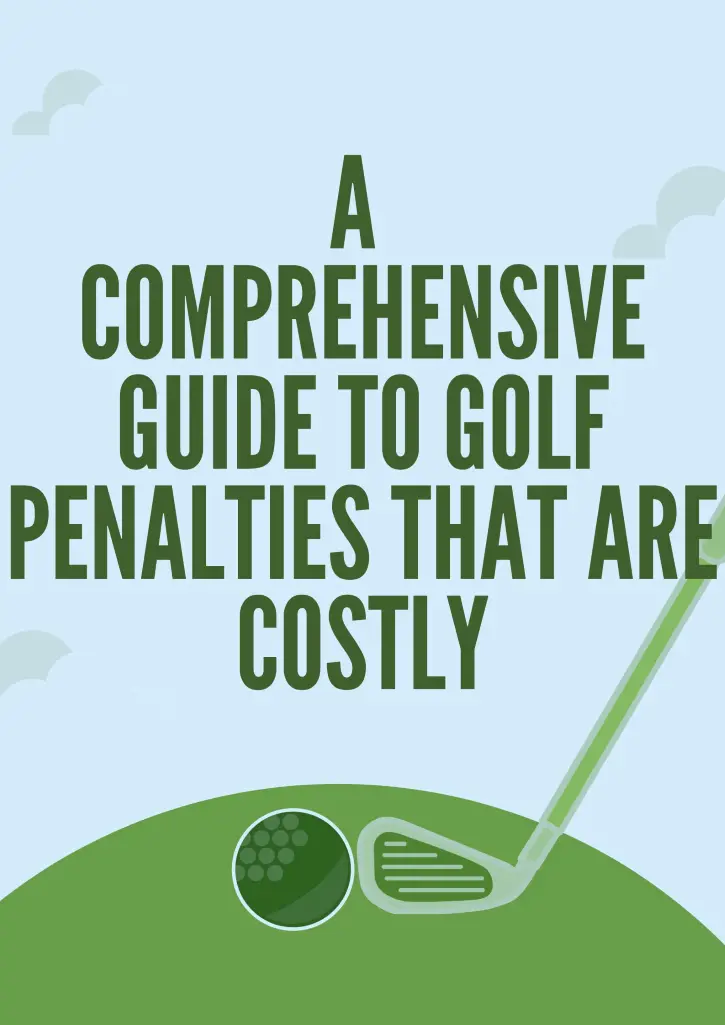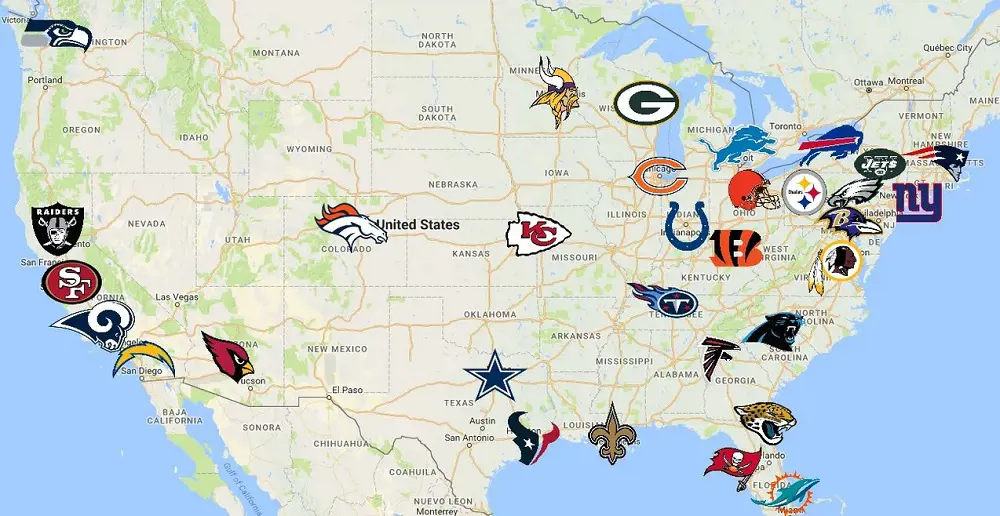Embarking on the lush greens of a golf course is a pursuit of precision and skill. However, amidst the pursuit of perfection, the specter of golf penalties looms large.
Understanding and navigating the intricate web of penalties is essential for any golfer aiming to keep their scorecard pristine.
In this comprehensive guide, we delve into the costly realm of golf penalties, unraveling the rules and consequences that can significantly impact your game.
Let's tee off on this comprehensive guide to minimizing the sting of a golf penalty.
Incorret Scorecard Penalty

The Incorrect Scorecard Penalty in golf refers to the submission of a scorecard that contains inaccuracies in recording a player's scores for individual holes during a round.
- 2-stroke penalty: If your total score on the scorecard differs from the actual number of strokes taken by more than two strokes.
- Disqualification (DQ): For a greater discrepancy or for repeatedly recording an incorrect score.
- 1-stroke penalty per hole: If you record an incorrect score for individual holes.
- Ignorance or a simple mistake won't necessarily lead to a penalty. If you can demonstrate it was unintentional, an official might waive or reduce the penalty.
Equiment Violation

Equipment Violation in golf occurs when a player is found to be in breach of rules related to the use, design, or condition of golf equipment during a round.
- Disqualification (DQ): Using clubs that don't meet the specifications set by the governing body.
- 2-stroke penalty per hole: Using a broken or damaged club that could affect your play.
- 4-stroke penalty: Carrying more than 14 clubs in your bag during a round.
- 1-stroke penalty: Playing a ball that isn't properly marked with your identification.
- 2-stroke penalty: Receiving illegal assistance from your caddie, such as advice on club selection or lining up a putt.
- 1-stroke penalty: Making illegal repairs to your clubs or equipment during the round.
Wrong Teeing Area Penalty

The Wrong Teeing Area Penalty in golf occurs when a player mistakenly tees off from an area other than the designated tee box for a particular hole.
- Stroke Play: Two-stroke penalty. You must then replay the shot from the correct tee box.
- Match Play: No automatic penalty, but your opponent can cancel your stroke and make you retake it from the proper area.
- All strokes played from the wrong tee box, including any penalty strokes incurred, do not count towards your score.
Improving The Lie

"Improving the Lie" in golf refers to actions taken by a player to alter the position or condition of the ball, the area of intended stance, or the area of the swing to gain an advantage. This includes actions like:
- Pressing down or leveling the ground where the ball sits
- Removing loose impediments that are not affecting the ball's lie
- Break or bend branches to clear a better swing path
- Positioning loose natural objects (like twigs or leaves) to support the ball
Penalty for Improving the Lie:
- A one-stroke penalty in both stroke play and match play.
Ball Moves After Address Penalty

In golf, the "Ball Moves After Address" penalty occurs when a player addresses the ball and it moves, either due to the player's actions or external factors, before the stroke is made.
In stroke play, this unfortunate event incurs a one-stroke penalty. There are two options available:
- Replay the shot from the original spot
- Play the ball from its new position
Important Exceptions
- If it's clear that the ball moved due to an outside influence.
- If the ball moves before you start your backswing, there's also no penalty.
Anchoring the Club

Anchoring the Club in golf refers to a putting technique where a player intentionally secures the club to a fixed point, such as the body, to stabilize the hands and arms during the putting stroke.
- The prohibition on anchoring the club became more explicit in 2016, with the implementation of Rule 14-1b.
- Using an anchoring technique in competition results in a two-stroke penalty in stroke play and loss of hole in match play.
- Standard and cross-handed grips, both relying on hand and wrist control, remain legal putting options.
Grounding the Club in a Bunker

Grounding the club in a bunker refers to the act of allowing the clubhead to touch the sand within the confines of a bunker before making a stroke.
- Bunker play in golf forbids touching the sand with your club (except during the swing), whether behind the ball, in front of it, or during practice swings.
- It usually results in a one-stroke penalty. The player must then play the ball as it lies without any improvement to the original position.
- Touching the sand accidentally while you line up in a bunker is okay, unless you're testing the sand or practicing your swing.
Failure to Mark Ball

Failure to mark the ball in golf occurs when a player neglects to mark the position of their ball before lifting it on the putting green or elsewhere as required by the rules.
- The penalty for failing to mark the ball when required is generally one stroke.
- If you do mark the ball later but can't prove its original position, the penalty applies too.
- If the failure to mark directly leads to another player having to play from the wrong place, additional penalties may apply.
Playing from the Wrong Place

Playing from the wrong place in golf refers to a situation where a player mistakenly makes a stroke from a location on the course that is not in accordance with the rules governing their current situation.
Failing to correct your error before the deadline or repeatedly playing from the wrong place can lead to disqualification.
Teeing Off from the Wrong Box:
- Penalty: Two-stroke penalty on stroke play. You must then replay the shot from the correct tee box.
Hitting the Wrong Ball:
- Penalty: One-stroke penalty on stroke play and loss of hole in match play.
Playing a Ball Outside the Permitted Area:
- Penalty: Stroke and distance penalty on stroke play and loss of hole in match play.
Ball Moves After Removal of Loose Impediment

In golf, the situation where a ball moves after the removal of a loose impediment refers to instances when a player takes action to remove a loose impediment near the ball, and the ball subsequently moves.
- If you intentionally caused the ball to move while removing the impediment, a one-stroke penalty in both stroke and match play is incurred.
- If the ball moved unintentionally, there would be no penalty.
Hazards & Penalty Areas

Hazards and Penalty Areas are specific areas on the course marked with red or yellow stakes/lines, typically bodies of water or areas with dense vegetation.
Hazards Penalty:
- A one-stroke penalty for unplayable lies or when taking relief.
- Two-stroke penalty for playing from the wrong place or making a stroke at the wrong ball.
Penalty Areas Penalty:
- A one-stroke penalty for lateral relief.
- A two-stroke penalty for relief outside the penalty area.
- Stroke-and-distance penalty for playing from the spot from the previous stroke.
Out of Bounds

Out of bounds refers to any area that's not considered part of the playable course. This typically includes areas marked with white stakes/lines, fences, walls, or natural boundaries like roads or buildings.
- If a ball is out of bounds, the player must replay the shot from the original spot with a one-stroke penalty.
- Players can drop the ball within two club lengths of the nearest in-bound spot, not closer to the hole, with a one-stroke penalty.
Lost Ball

A ball is considered lost if it cannot be found within the allowed time (usually five minutes) after the player begins searching for it. If a ball is lost off the tee or the player elects not to take relief, they must play a new ball from the original spot with a one-stroke penalty.
If the player believes the ball is lost in the penalty area or out of bounds, they can take relief by estimating a reference point and dropping the ball within two club lengths of that point, not closer to the hole, with a one-stroke penalty.
Unplayable Lie

When a golfer deems their ball's position to be challenging or undesirable, they can declare it unplayable. This rule is referred to as the Unplayable Lie and the players have the following options:
- Stroke-and-Distance: Replay the shot from the original spot.
- Drop Within Two Club Lengths: Drop the ball within two club-lengths of the spot where it lay, no closer to the hole, on a line directly back from the hole.
- Lateral Relief: Drop the ball within two club-lengths of the spot where it lay, no closer to the hole, within a relief area measured from the unplayable spot.
Penalties:
- A one-stroke penalty for all three options when declaring an unplayable lie.
Golf Whiff Penalty

A "whiff" in golf occurs when a player attempts to strike the ball but completely misses it. It affects the player's overall score for the hole, potentially influencing their performance in the round.
Penalty:
- A whiff is counted as a stroke. The player's score increases by one stroke, reflecting the attempt to make contact with the ball.
Unreasonable Delay of Play

"Unreasonable Delay of Play" in golf occurs when a player takes an excessive amount of time to complete a round or a specific shot, significantly slowing down the pace of play for others on the course.
In many cases, players may receive a warning from course marshals or officials for slow play. If the delay continues, penalties may be imposed on the offending player, which gets progressively harsher and can include disqualification from the round as well.
Examples of unreasonable delays include:
- Prolonged practice swings
- Excessive search for a lost ball
- Slow decision-making: Hesitating and debating club choices or strategies for an extended period for example.
- Ignoring prompts to move on
Interfering with a Moving Ball

Interfering with a moving ball occurs when a player deliberately or accidentally influences the movement of their own ball or another player's ball in motion. The consequences can be different depending on whether the interference is accidental or intentional.
- Deliberate interference with a moving ball often results in penalty strokes.
- If the interference is accidental or unintentional, the player may be required to replace the ball with no additional penalty.


